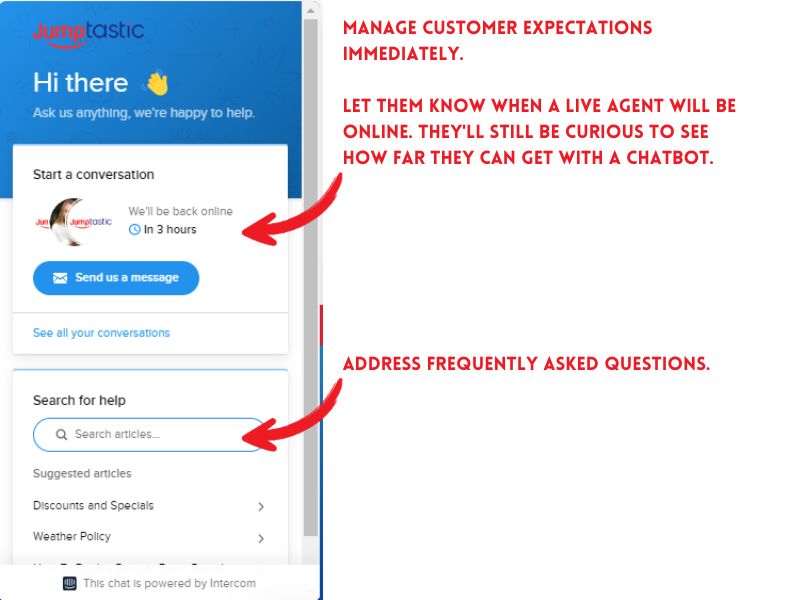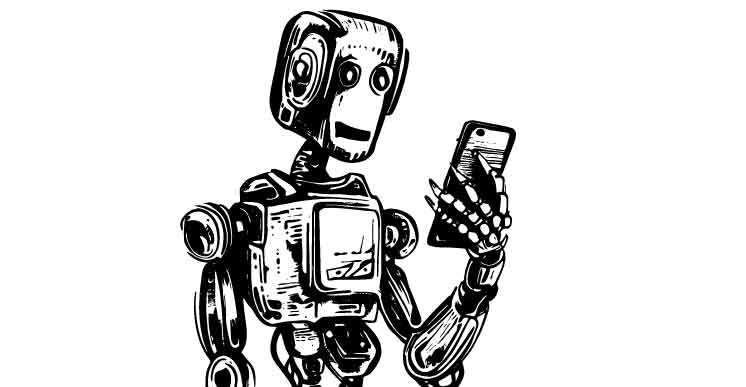If there is one shiny object you should include on your site, assuming you don’t already have it, it’s a chatbot.
Even though most people prefer to interact with a human agent, there is some level of assistance customers don’t mind receiving from a chatbot, especially when it provides immediate answers to their inquiries.
For those who’ve used chatbots in the past and didn’t like them, I’d be curious to know which type of chatbot you used.
There are three general types of bots: rules-based, artificial intelligence (AI), and application-oriented bots, which are hybrids of the first two. Your choice of which one to use should be based on what task you want the bot to handle well.
Before I tell you the type I recommend most, let’s consider why they’re even worth your time.

THE NUMBERS DON’T LIE
🎯 35% of business leaders said chatbots helped them close sales.
🎯 The top three sales use cases are collecting information and qualifying leads, booking product demos, and engaging website visitors.
🎯 Chatbots sped up customer response times by an average of 3X.
🎯 Business leaders say chatbots have increased customer support satisfaction scores by 24%.
🎯 Chatbots increased sales by an average of 67%.
CHATBOTS VERSUS PHONE SYSTEMS
When customers call a company and get put on the line with an automated phone system, immediate disappointment sets in. They expect the call to be a long, pointless delay in their quest to get in touch with a real person.
WHAT CUSTOMERS SAY ABOUT CHATBOTS
The reaction to chatbots is quite different. The widget alone serves as a visual cue for your customer to adjust their expectations. They’re not sure the bot can help, but they’re hopeful something good will come out of the interaction. A recent survey showed:
💚Most respondents preferred waiting for an agent but were open to chatting with a chatbot first.
💚Respondents liked how quickly chatbots answered their inquiries.
💚Respondents trusted chatbots with basic requests.
💚Few respondents think a company shouldn’t use a chatbot.
AVOID THESE MISTAKES WHEN SETTING UP YOUR CHATBOT
Here is where I wonder about the people who’ve used chatbots in the past and didn’t like them. I’ve heard business owners say things like, “I tried one of those things before, and I got nothing but dumb questions.”
How well a chatbot performs depends on how well you’ve trained it, and at no time should your chatbot pretend to be human. Giving your customers the impression that they’re dealing with a live agent is a fast way to ruin their first impression of your business.
Chatbots should be set up to:
👉 Deliver information for frequently asked questions.
👉 Walk a customer through booking appointments.
👉 Schedule an appointment to speak to a live agent if the inquiry cannot be resolved, especially outside of typical business hours.
Below is an example of Jumptastic’s chatbot. They’re a party rental company specializing in bounce house rentals and other inflatable attractions.

You can’t tell from this image alone, but this chatbot is NOT a pop-up that hits you like a pie to the face. It’s an icon that sits in the bottom-right corner of the site, where customers expect to find this type of assistance. When customers click on the chat icon, they’re engaging with this “shiny object” on their terms.
WHICH TYPE OF CHATBOT SHOULD YOU USE?
Of course, the answer to that question depends on your budget and what you need the bot to do, but hands down, I prefer a conversational AI bot.
Rule-based chatbots, also known as click bots, are fine too, especially if you’re just getting started.
I’ve not used an application-oriented chatbot, so I won’t comment on how well it can perform for your business, other than to say it might contain the best of both worlds.
RULE-BASED BOTS (RBB)

For some businesses, RBBs make more sense than a conversational AI solution.
👉 They are usually less expensive and easier to set up.
👉 Since the input is predefined (they’re set up like a choose-your-own-adventure experience), they are guaranteed to deliver a response to your customer’s question.
👉 If your sequence of events is based on extensive knowledge of your customer’s journey, the result your customers get should be the response they are looking for.
👉 You can easily transition the conversation from the bot to your customer service representative.
👉 You can include images and videos to further assist your customer with understanding what to do next.
These bots are a great way to deliver answers to frequently asked questions or to field as many questions as possible before transferring the customer to a live agent. They’re also helpful in funneling customers to a specific call-to-action, or a specific goal, like booking the deal of the day.
If a question pops up that your rule-based bot can’t answer, that’s an opportunity for you to learn something about your sales process. Go back and add a sequence to your bot that answers the question. Over time, you’ll improve your bot’s performance and efficacy.
CONVERSATIONAL AI BOTS

A conversational AI chatbot is a system that learns from every conversation it has. It runs on machine learning algorithms that detect variances in the way customers try to get answers; then it finds different ways to provide them with accurate responses.
Unlike rule-based bots, where you have to update the system manually to take on new questions, the AI bot does this on its own. Eventually, it builds up the ability to have a natural-feeling conversation with your customer.
These bots take a while to set up and train, but they’re worth every penny once they’re well-equipped with data and experience.
🎯 When properly set up, it decreases customer response times, provides satisfying responses to inquiries, and increases your customer satisfaction ratings.
🎯 Every interaction enhances its decision-making skills, ensuring it can respond to a wider range of inquiries and cut back on requests for a live agent.
🎯 It understands many languages and responds to customers appropriately, helping bilingual and multilingual businesses close sales with a broader clientele.
🎯 It can do everything a rules-based bot does.
So, which chatbot will you use?
When you get around to using one, make sure to DM us on Instagram or Facebook and let us know how well it’s working for you.






